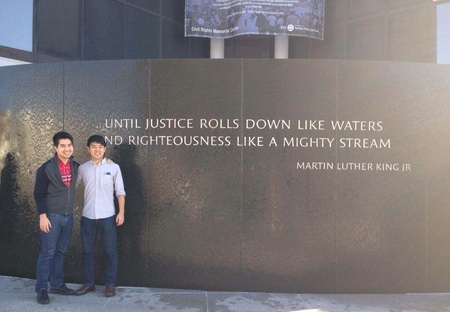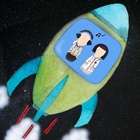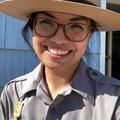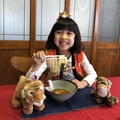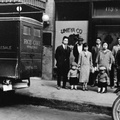Introduction
Kota Mizutani grew up in rural Sonoma County, California, where he gradually became aware of Japanese American traditions that surrounded him as a child; teriyaki festivals, obons, taiko performances. He began playing taiko himself at the age of six, he told Discover Nikkei in a recent interview, and it was history and community surrounding Japanese drumming that grounded him in his Nikkei identity. These days, he is 26 years old and continues playing with Mark H Taiko in the Washington DC metro area.
He has also become a strong voice for the Japanese American community in politics as a youth leader in the Japanese American Citizens League (JACL) and various other nonprofits. He works full-time as the Deputy Communications Director for the U.S. House Committee on Education and Labor in the DC area.
Background
Mizutani identifies as a Shin-Nisei—a second generation Japanese descendant who also has strong ties to Japan itself. Both of his parents were born and raised in Tokyo. They met in the US, and decided to raise a family in California.
“I grew up visiting Japan every year,” he remembered in his recent interview, “loving Japanese food, watching Japanese TV, and speaking Japanese (albeit in that hilarious ‘Japan-glish’ hybrid that many multilingual families develop). To this day I still travel to Japan, on average once a year to visit family and friends and explore more food.”
This close connection to Japan, however, also meant that his close family was not intimately familiar—at least not yet—with Japanese American culture and history. Gradually, though, he became aware of the JA community as he began attending taiko performances.
“I was mostly pulled in by the food at these events at first,” he says, but even as a child he slowly began to form relationships and to absorb this history around him. “I started to learn the stories of how the community first formed, endured incarceration, and rebounded afterwards,” he remembered. “That learning experience kicked off my journey into Nikkei history and advocacy.”
Japanese American Citizens Leage (JACL)
And advocacy is exactly where he has gone in years since. Mizutani first jumped into political advocacy as a high school volunteer with the JACL. The JACL is the oldest Asian American civil rights organization in the country, whose stated aim is to “monitor and respond to issues that enhance or threaten the civil and human rights of all Americans…[and] particularly the Asian Pacific American Community.”
It has a complicated history and has caused a great deal of controversy within the JA community due to its work during the World War II incarceration. However, it has made efforts to reckon with this history in the years since; and, likely because of these efforts to redress its legacy and to become a more inclusive organization, it still remains at the forefront of Asian American political advocacy today.
Mizutani began volunteering with JACL in high school as a chapter youth representative, coordinating local workshops around his area. Then, after beginning college at Brown University, he was appointed to represent the East Coast region on the JACL National Youth/Student Council. It was in this role as the East Coast representative that he had his most formative experience as a young activist.
In 2015, he remembered, “I visited Selma, Alabama for the anniversary of the 1965 Voting Rights Marches along with the JACL staff, former Selma protestor Todd Endo, and my fellow NY/SC-er, Kenji Kuramitsu. The trip opened my eyes to the history of Japanese American involvement in the greater civil rights movement, particularly for Black Americans, and the need to reinforce our ties to other communities of color.”
Inspired from this trip, he immediately began working with Kenji to write a national JACL resolution in support of H.R. 40, a bill to establish a commission to explore reparations for chattel slavery—“exactly like the one that established the Commission on Wartime Relocation and Civilians,” he notes—a Congressional committee formed in 1980 to investigate grievances surrounding the Japanese American incarceration.1
“After pouring time into researching, writing, lobbying, and debating on the resolution before and during the 46th JACL convention, the JACL National Council passed the resolution 75-1.” The resolution continues to serve as the mandate and basis for the JACL’s continued advocacy on H.R. 40 today.
Taiko
Beyond political advocacy, Mizutani has also explored taiko as a tool to both express himself and to build connections within the Nikkei community. It was taiko that first brought him to those early JA events in Sonoma County as a child, and gradually he began to learn how closely taiko itself was also tied to the blossoming of Japanese American political identity in the 1960s and ’70s.
“When I learned this,” he said in our interview, “this gave me an entirely new perspective on taiko. It changed taiko for me from a dedicated hobby to something with a broader social purpose.”
That conviction led him to plan and direct the 2017 East Coast Taiko Conference at Brown University, and to schedule it on the Day of Remembrance weekend (February 19). The Day of Remembrance is a national day of observance for the incarceration of Japanese Americans during WWII. That timing was important. He opened the conference with a reminder for participants about the Japanese American history’s role in the art form that they had gathered to celebrate.
He also used the conference as a means to connect with the international Nikkei community—inviting a group of mostly Nikkei taiko players from Brazil to host workshops at the event. Today he continues to perform with Mark H Taiko in the DC Metro Area, and views taiko as an important tool to preserve Nikkei culture as well as to build connections among Nikkei communities across the international diaspora.
For the Nikkei community
At 26 years old, Mizutani has spent over 10 years in various leadership positions within the JACL advocating for the Nikkei community and for the broader inclusion of other people of color in its work. And it is work he is excited to continue doing. We asked him in his interview—as a political advocate, what message he would pass along to others of Nikkei heritage. His message?
“Think big. As corny as it sounds, I would ask both younger and older Nikkei to think big when it comes to advocacy and organizing. It can be tempting to stay focused on one issue, like the history of the incarceration or one audience (like other young Japanese Americans), but in doing so we may miss out on the many opportunities to expand beyond that—to find other nuanced stories and to learn from and support other oppressed people outside the Nikkei/AANHPI community.”
Note:
1. The committee’s purpose was to “investigate matters surrounding the incarceration and to recommend appropriate remedies. Although it did not have any power to correct the grievances it uncovered, the committee did some invaluable work by conducting hearings in 20 cities around the country and issuing an exhaustive final report on the subject.
© 2022 Kimio Medlock



